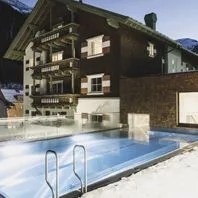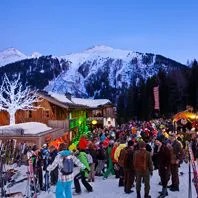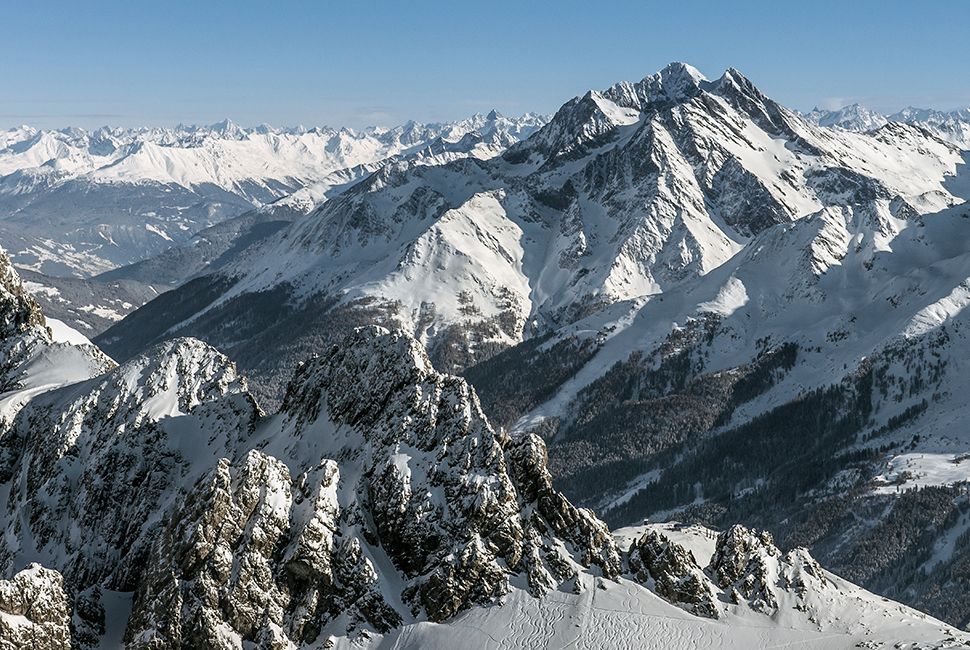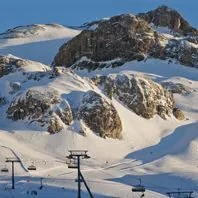In 1890, six years after the first mountain lifts opened in St. Anton, Austria, a man named Hannes Schneider was born 10 miles west in the village of Stuben. In 1907, at age 17, he became the first ski instructor in St. Anton. 15 years later, he opened a ski school in town. Using a teaching method he invented called the Arlberg technique, Schneider became known throughout Europe as the father of ski instruction. And his reputation soon spread. He would go on to ski train the Austrian Army during the First World War and the 10th Mountain Division of the US Army during the Second World War. In between, he popularized the sport in Japan. He is without question the most historic figure in Austrian ski history, and perhaps ski history in general.
It makes sense, then, that he is responsible for the ski giant St. Anton has become today. A trip here is truly a journey to where it all began. St. Anton is located in Tyrol, Austria’s most mountainous state, and only about 12 percent of the surrounding terrain is inhabitable. In other words, the landscape is dramatic, the slopes are steep, and the valleys are narrow. Today, it is Austria’s most heralded ski town, attracting skiers from all over the world.

Where to Stay
There are many high-value hotels in town whose old-world, village-inn charm makes their experience feel above their rate-grade. The four-star Hotel Schwarzer Adler, for example, traces its roots all the way back to 1570 and starts at $170 per night. Modern properties include the m3 and Anthony’s Life & Style Hotel. But perhaps the best options are traditional, such as the Hotel Post, Hotel Kertess, the Valluga Hotel, and Raffl’s Tyrol Hotel. There are good options on the hillside, too. Check out the Ulmer Hutte and Das Mooser Hotel. If you want to splurge, consider the Hotel Tannenhof, a seven-suite hotel that includes chauffer service. There are budget hotels in St. Anton, such as the family-owned Haus Steffeler, but keep in mind that rates still land somewhere in the $80/night range. If you need to go a cheaper route, prices in the nearby villages, like Stuben, tend to be lower.

Where to Eat
St. Anton has a permanent population of less than 2,500, yet there are 90 bars and restaurants in town (a great majority of which are only open in winter). The best advice is often to blow with the wind, asking acquaintances for recommendations and seeking out your mood and cravings. That said: You will definitely want to experience a meal and/or après at a mountain restaurant for their views and traditional Austrian fare, such as Schweinebraten (slow-roasted pork), Speck (local bacon), Speckknödel (dumplings with bacon), and of course the classics, Weiner Schnitzel and Bratwurst. Try Rodel Hutte or Griabli; Restaurant Fuhrmannstube is also a premier traditional food spot. For drinks, check out Ulmer Hutte, Senn Hutte, or the Mooserwirt, which claims to sell more beer than any other place in Austria. In the valley, have dinner and drinks by the fire at the cozy Ski Museum; end an evening walk to the edge of St. Anton with some soup and fondue at the Genussrestaurant Das Sonnbichl. There are dozens of après ski locations in St. Anton, both on the slopes and in the town center. The vibes can range from bass-pounding DJs to live bands to mellow wine bars. As a result, you will naturally be enticed into whichever fits your mood — just go with the flow, because pretty much every mountain hut, hotel and restaurant has an après party. Two legends, the MooserWirt and the Krazy Kanguruh, are great places to start; Basecamp, adjacent to the Galzig Bahn (the main lift) is a great place to people-watch; and Heustadl has two stages of live music.


